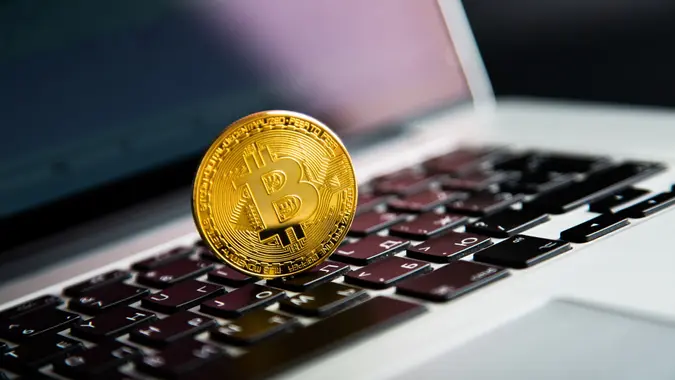3 Reasons To Be Pessimistic About Crypto in 2025

Commitment to Our Readers
GOBankingRates' editorial team is committed to bringing you unbiased reviews and information. We use data-driven methodologies to evaluate financial products and services - our reviews and ratings are not influenced by advertisers. You can read more about our editorial guidelines and our products and services review methodology.

20 Years
Helping You Live Richer

Reviewed
by Experts

Trusted by
Millions of Readers
2024 was a great year for crypto investors. Bitcoin broke the $100,000 mark for the first time, altcoins surged, and many institutions embraced digital assets.
Before you assume the rally will continue this year, some experts are pessimistic about crypto, and here’s why.
The Biggest Tailwinds Are Already Behind Us
Crypto’s explosive rally in 2024 wasn’t an accident. Several things fueled this surge, from the SEC approval of Bitcoin ETFs to the halving cycle and a wave of optimism about the crypto-friendly Donald Trump presidency.
“A lot of good news was already factored into prices in 2024. This is the classic ‘it’s better to travel than arrive.’ If we look at Bitcoin, 2024 had a lot of good catalysts, such as the new ETFs, the 4-year halving, which occurred in April, and we will not have one for another 4 years,” said Vince Stanzione, CEO and founder of First Information. “We also had the run-up with the perception that President Trump is crypto-friendly. [However], the reality may turn out to be that what he said during election campaigns and what happens now that he’s president are two very different stories.”
Trump promised to make the U.S. the crypto capital of the world and create a Strategic Bitcoin Reserve. It’s been 30 days since Trump took office, and his only action on crypto so far has been signing an order to establish a crypto working group.
While this partly delivers on his promise, “I don’t see the U.S. Treasury starting a Bitcoin reserve fund anytime soon. What they may do is agree not to sell Bitcoins that are forfeited from crime and hold those BTC on account, but that is far from a Bitcoin reserve fund,” said Stanzione.
Meme Coins, a Bubble That Won’t Bust Yet
Meme coins kept gaining steam for the better part of last year, primarily driven by hype. And since meme coins thrive on speculation, you can guess what happened to the recently launched meme coins by Donald and Melania Trump shortly before the inauguration. They surged to all-time highs and then plummeted, leading to millions of dollars in losses for regular people who jumped in late as insiders and early investors sold.
“I think the biggest detriment is going to be memes. They’re horribly toxic to the ecosystems. What bothers me is how this ‘season’ doesn’t seem to be fading out like so many other seasons in DeFi. If meme coins continue to be the top draw, it’ll hurt the industry as a whole, and people won’t take the technology seriously,” said Matthew Ruley, director of content at Dypto Crypto.
Competition With AI
Artificial intelligence has reshaped nearly every industry, and crypto is no exception. While AI and blockchain were once seen as complementary technologies, they’re now becoming direct competitors.
“Cryptocurrencies compete for resources with artificial intelligence products, which have surged in the past few years. [The] development of AI products competes directly with the same power consumption and internet resources that blockchains use. Also, the pool of developers that [have] been critical to the building of blockchains is losing talent to ever-expanding artificial intelligence projects,” said Richard Robbins, founder of TheTechnologyVault.
“Another way that AI creates problems for crypto is in the use of AI to drive trading patterns that increase market volatility. AI has the potential to threaten the security of blockchain networks, which would severely undermine them as fraud and theft could become major obstacles,” said Robbins.
 Written by
Written by  Edited by
Edited by 

























